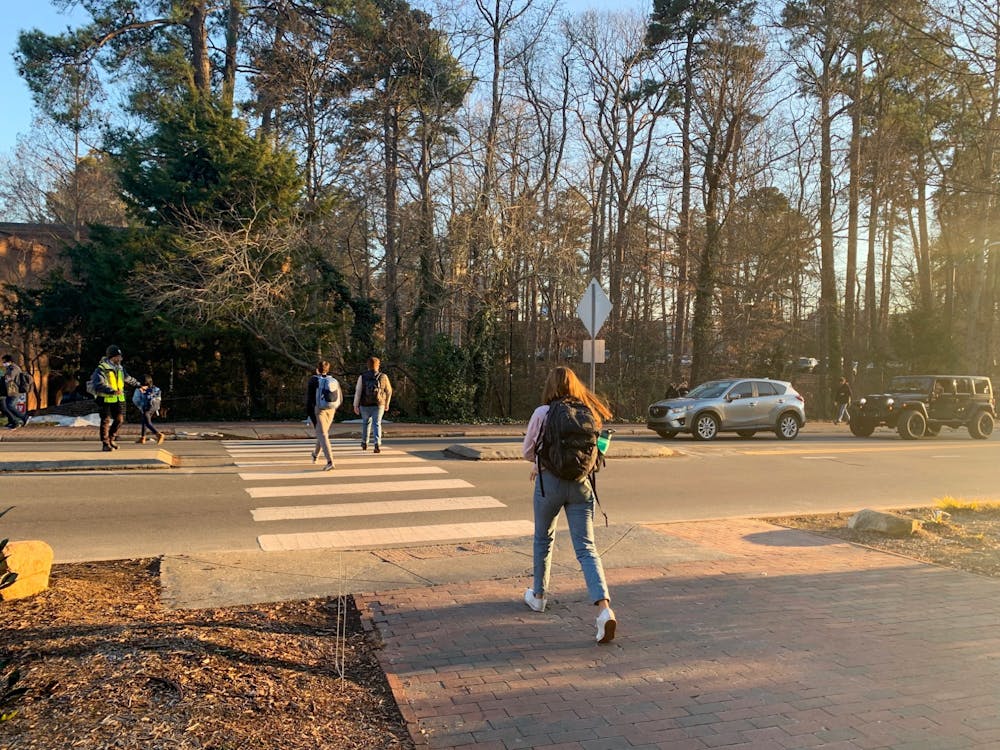In its current state, the Chapel Hill-Carrboro area is difficult to navigate by foot and car. And when these modes of transportation intersect, neither is properly managed or advocated for.
But if the balance had to be shifted in the favor of one side, it should be the pedestrians.
The Chapel Hill-Carrboro area is home to over 80,000 people, according to census data. While it is unclear how many UNC students were counted in this total, roughly 30,000 students attend the University — many of whom walk on campus.
And many others work at locations that are difficult to access via car. Walkers make up a sizable portion of the area’s population, but the majority of residents drive.
Driving in Chapel Hill and Carrboro is not impossible, but it is certainly not convenient. The busiest, most desirable areas are designed to be accessible to college students, for whom it is opportune to walk. Thus, finding parking in these areas can sometimes take longer than the actual trip to the area itself.
That trip, of course, is riddled with walkers who will sometimes get impatient and jaywalk, traverse crosswalks at their own leisurely speed and perhaps even cut through areas that are designated for the cars. Trying not to hit them is a challenge itself, and it is not fair to task people with actively avoiding vehicular manslaughter every time they need to pick up their groceries.
That being said, if a 3,000-pound car crashes into a 150-pound person, the car is likely to inflict more harm. People are not in a position to actually damage cars, so the idea that they need to make way for cars is ridiculous. Although walking may be more convenient in parts of Chapel Hill and Carrboro, it is not as though walkers are the dominant group.
They must also wait for cars to pass, in addition to the threat of being crashed into. The same problem exists for cyclists, who are placed at even greater risk, as they travel at a greater velocity than walkers.
This issue is not exclusive to Chapel Hill and Carrboro, North Carolina or even the United States. But this sort of college town has the special distinction of a genuinely strong divide between the two parties — pedestrians and drivers — while both groups have genuine reasons for their means of transport. Chapel Hill is not a city like New York, where driving a car is just a way to get parking tickets.



